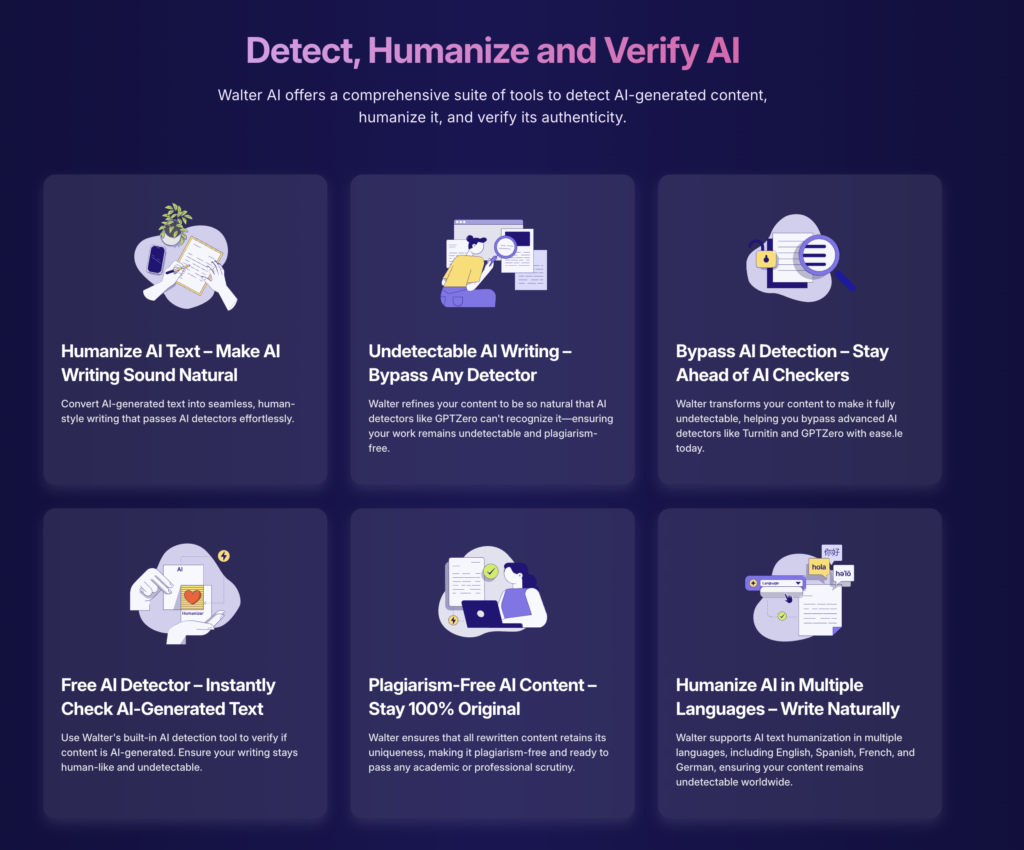Not that long ago, AI content was a novelty. Something to experiment with on side projects or help outline a blog post when you’re short on time. Fast-forward to now, and nearly every marketing team uses AI in some way. But here’s the thing. With that rapid adoption came a new problem: AI detection tools are getting better, and they’re watching. So how can you bypass these AI detectors?
Search engines, publishing platforms, and even end users are starting to recognize the signs of machine-written content. It’s not always obvious, but when every sentence feels too tidy, too generic, or just a little lifeless, readers disengage. Worse? SEO takes a hit. Detectable AI content is more likely to get ignored, downranked, or flagged in AI-driven summaries and overviews.
And let’s not forget the trust factor. When your audience senses that your blog posts, landing pages, or newsletters weren’t written by someone who understands them, they bounce.
So if you’re a SaaS marketer, SEO writer, or copywriter leaning on AI tools, you’ve got a new challenge: how do you keep the efficiency of AI without sounding like a robot?
How AI Detectors Actually Work (for Content Writers)
It’s not magic, and it’s not spyware. AI detectors don’t look for hidden watermarks or metadata. What they analyze is style. The shape, rhythm, and predictability of your writing.
Let’s break it down.
Syntax, Structure & Stylometry Patterns
AI detectors use something called stylometry, which is basically the science of analyzing a person’s (or machine’s) writing fingerprint.
Here’s what they look for:
- Repetitive or symmetrical sentence structures
- Lack of emotional cues or variance in tone
- Overuse of transitions like “in conclusion” or “moreover”
- Passive voice and abstract phrasing
- An overall “glossy but empty” feel
Sound familiar? That’s because most AI writing tools default to that exact pattern. It’s neat and readable, but it doesn’t sound like something someone with opinions, experiences, or a real voice would say.
Predictability & Perplexity
Two words every AI-aware marketer should know: perplexity and burstiness.
- Perplexity is about how predictable your text is. The more predictable the phrasing, the lower the perplexity, and the more likely it is to be flagged.
- Burstiness measures sentence variation. Real human writing tends to jump around. Some sentences are short. Others ramble. There’s a natural inconsistency.
AI tends to smooth everything out. But that smoothness? It’s exactly what makes it detectable.
For a deep dive, check out this breakdown on AI detection—but the short version is: when your writing is too clean, it starts to look suspicious.
Why “Bypassing” AI Detectors Ethically Matters
Let’s get one thing straight—bypassing AI detectors isn’t about being sneaky. It’s not about tricking systems or spamming your way to the top of Google. It’s about writing better, more believable content—faster.
The Problem with Spinning and Plagiarism
You’ve probably seen those “bypass tools” that promise to make your content undetectable with one click. Most of them are glorified spinners. They swap words, rearrange syntax, and sometimes spit out nonsense.
They don’t improve your content—they just disguise it. Poorly.
Spun content doesn’t just sound awkward—it can also get flagged for plagiarism, or worse, make your brand look lazy and untrustworthy.
Humanizing Means Adding Value
This is where ethical marketers stand apart.
Humanizing AI-generated content isn’t about fooling tools. It’s about elevating your writing. It’s about bringing in:
- Real experiences
- Personality
- Point of view
- Emotion
- Brand tone
AI gives you a draft. You make it meaningful.
Strategies to Make AI Content Undetectable (Without Deceit)
Here’s the good news: you don’t have to ditch your AI tools. You just need to build a second layer into your process—one that gives the content a human heartbeat.
Include Personal Anecdotes & Industry Voice
One of the fastest ways to humanize content? Be specific.
Talk about a launch that failed. Mention what your customers actually said. Share something that only someone in your niche would know.
Example:
“A lot of CRMs promise to ‘streamline sales.’ What finally clicked for us was when we automated follow-up emails—our demo bookings doubled in two weeks.”
A sentence like that instantly breaks the AI pattern. It adds context and credibility, and no tool on Earth could fake it.
Mirror Human Tone & Emotion
Want to sound more human? Stop writing like a term paper.
Real people use:
- Contractions (it’s, you’re, we’ve)
- Colloquial phrases (“let’s be real,” “no one has time for that”)
- Rhetorical questions
- Humor, frustration, enthusiasm—anything with feeling
Play with rhythm. Short sentences? Great. Long, winding, comma-filled ones? Also great. The variety is what makes it feel natural.
Rewrite Content with Walter Writes AI

If rewriting every piece of content manually sounds like a nightmare, we get it.
That’s where Walter Writes AI comes in. It’s a rewriting tool specifically built for marketers who want their AI content to sound human.
Instead of spinning, Walter reworks drafts by:
- Breaking repetitive sentence patterns
- Adding burstiness and tone variation
- Adjusting the structure to match the natural flow
- Enhancing emotional and brand alignment
→ If your writing sounds robotic or gets flagged, this AI humanizer helps smooth it out and make it sound real.
Before & After: Rewriting Marketing Copy to Pass Detection
Let’s put this into context.
AI-generated draft:
“Our SaaS platform helps businesses improve efficiency through automation. It is scalable and user-friendly for teams of all sizes.”
Rewritten with Walter Writes AI:
“Tired of jumping between ten different tools just to stay on top of your work? Our platform takes the chaos out of your workflow—whether you’re running a lean startup or a fast-growing team.”
Same message. One sounds like a brochure. The other? A conversation.
Checklist for Marketers Writing with AI in 2025
Use this as a final sweep before you hit publish:
- Would a human actually say this out loud?
- Are there any real examples or experiences woven in?
- Does the tone feel like your brand, or like anyone could’ve written it?
- Did you polish the draft with Walter Writes or another tool that focuses on voice?
- Could this pass as something a thought leader or team lead would proudly put their name on?
If you’re not checking most of these… you’ve got editing to do.
FAQ: How to Bypass AI Detection in SEO
By using AI to create, and then rewriting or refining to inject tone, rhythm, emotion, and voice. Tools like Walter Writes AI help with this, but it starts with intention—you’ve got to care about the result.
Yes, but not blindly. Google prioritizes helpful, original content. If your AI-assisted draft lacks personal insight or sounds generic, it won’t perform. But humanized, edited, experience-backed content? Still ranks.
If it reads too evenly, lacks personality, avoids opinion, and uses the same rhythm throughout, it’ll likely get flagged. If it doesn’t feel human when you read it out loud, it’s probably not.
Conclusion: Should You Use AI?
AI isn’t the enemy. Bad content is.
The real goal isn’t just to “bypass detectors”—it’s to write in a way that connects. That builds trust. That feels like it came from a person who’s been there.
That’s what readers want. That’s what search engines want. And that’s what keeps people coming back.
Start using Walter Writes AI today to bring your AI-generated content to life. Fast drafts, real voice, and human quality—because sounding like a person still matters.









